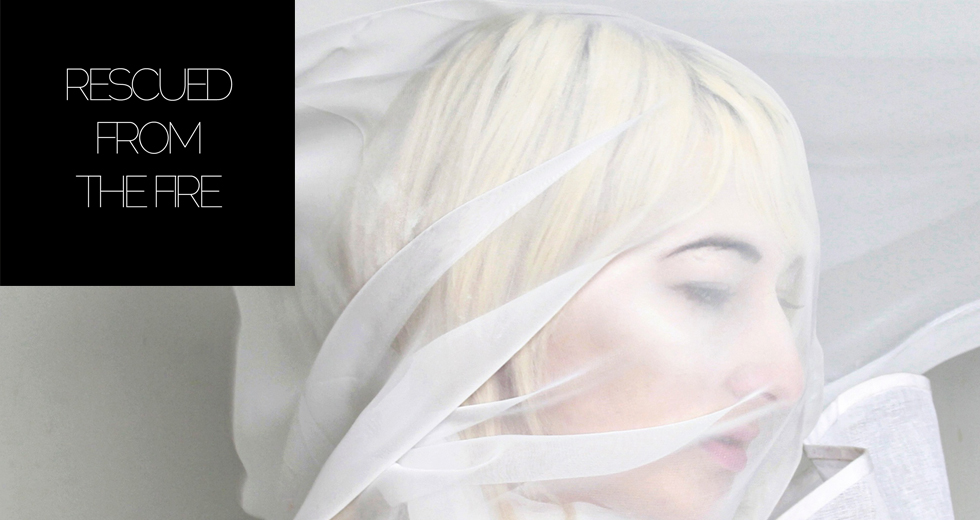The Idiosyncratic Vocal Technique of Diamanda Galás
It’s nightfall at my parents’ home, nestled in the kind of über-suburban California neighborhood where cul-de-sacs hum stolidly, and I’ve been staring at the cover of The Sporting Life for an approximate eternity.

The album art is an Escher maze of confoundment, a baffling diorama of misgivings beneath a thin veneer of exhilaration. John Paul Jones, the bassist of Led Zeppelin, perches at the wheel of a natty green convertible, cocksure in the de rigueur rocker uniform of dark shades, red blazer and slicked-back hair. And sprawled on the hood of his midlife crisis chariot, taking the spectacular piss out of the excesses of his genre, is the avant-garde icon Diamanda Galás
The album cover makes plain that Galás and Jones were out to bust rock & roll chops on their spooky and grimly engrossing 1994 joint effort. While it’s by far the most “pop” outing in Galás’ catalogue, it surely gave pause to any Chads and Bruces looking for their next “When the Levee Breaks” fix.
The photo is a happy irrelevance, though, because visuals are neither the appeal nor the necessity of Diamanda Galás. That would be her voice, the extraordinary force that merges emotional havoc with intense technicality. It’s an invariably powerful instrument that can only be produced from steel lungs and a deep well of indignation, and made her an eminence among the experimental set and a major influence on fellow musical forces including Anohni, PJ Harvey and Zola Jesus. Her voice is at once confrontational, political and, often, scary. Perhaps even most defiantly, it’s a concept bred from a female artist who always remains entirely in control of it.
Since Galas released her debut album The Litanies of Satan in 1982, she has shoehorned a dense amount of information into both her vocals and compositions. It’s exhausting trying to catch every spoke in her rapidly turning wheel, but notably there’s scientific residue from her college studies in neurochemistry, a malleability gleaned from operatic training, and pure, abject shrieking from a splinter sect of German expressionism.
Whatever the influences, Galás channels them into a singular voice cresting in garrulous, vibrato-heavy howls at the top register and plumbs murky near-baritone coffers at the lowest end.
In interviews, she’s detailed a poetic personal impetus that borders on solipsism, yet can sound mystified herself by the extraordinary tones emitting from within her body. Beyond that, peering into her lyricism, she’s plucked from the immediacy of the AIDS crisis, long-deceased Romantic poets, portentous Catholic mass and even the odd ancient genocide. Then she tops it off by raving about saccharine pop princess Doris Day, because... she can.
Whatever the influences – mouldering scribes, beach blanket bingo – Galás channels them into a singular voice cresting in garrulous, vibrato-heavy howls at the top register and plumbs murky near-baritone coffers at the lowest end. Even her throttling words are secondary to this; they’re merely the conduits to the real emotional evocation of her extreme vocal tonalities. Her deliveries on numbers such as “Ter Vogormia” and “The Thrill Is Gone” are forcefully realized, full of conviction and so gripping because she succumbs to every ferocious emotion she feels. (And nearly every emotion in the Galás catalogue is a macabre one.)
But there’s no helplessness in this emotional transparency; only strength. She sources it from being so powerfully captive to her passions that she is incapable of expressing them halfway. Galás feels so wholly that it makes more measured singing sound contrived; she even manages to make Portuguese fado, generally the ninth circle of emo hell, sound detached. For this, Galás has been called basically every variation of that wonderfully sexist pejorative “crazy.” But that contends a degree of chaos that simply doesn’t exist. Galás is strictly controlled, even as her tones spiral into the ether. Her voice is pure id.
There’s an acrobatic quality to this delivery, and it’s not by happenstance. Galas was first trained in opera singing and concert piano, and performed the latter with the San Diego Symphony as a teen prodigy. Galás’ vocal range is rumored to waft around eight octaves, though she’s quick to scoff at such categorizations. And that impressive range is certainly more scabrous than that of the average vocalist bearing such training, with its piercing swoops and rattling thrums. (No word if she enjoys the occasional comparisons to Meredith Monk and Maria Callas, however.)
Galás is a multiphonic singer. It’s an arduous technique to master. For Galás, though, it’s almost intuitive.
The blood-curdling roars for which she’s best known come from violent inception. The technique itself nods to the Schrei (“shriek”) opera of German expressionism, but it’s far from a standard scream. These sounds are modulated, controlled from the diaphragm in the style of classical intonation. Her earliest demonstrations of this emerge in the 1970s opera Un Jour Comme Un Autre, when she played a torture victim. (On-the-nose IMDB note: Galás would go on to work on a film, Schrei 27, that explored pain in a medical facility.)
Galás is also a multiphonic singer, meaning she can sing several pitches at once. It’s an arduous technique to master, more common in brass and woodwind instrumental performance. (When’s the last time you harmonized with yourself during karaoke?) In singing, it involves distorting the mouth and throat muscles. Tibetan Buddhist chanting and Tuvan throat singing sometimes employs this concept, also called “overtone singing.” For Galás, it’s almost intuitive. She once told Arthur that this ability is a sort of blithe mystery even to herself:
“I don’t know what I’m doing, really, it’s just that I can feel that the resonance is in the sternum, and then the nose, and then once that goes, you can somehow get higher notes from that first note, then you’ve got like three of ‘em going. So then it’s more a sensation, and you have to have the correct sensation, you have to be very relaxed to do it. And when you do it, it’s a blast, it’s really easy. And it’s very healthy for the voice, because there can be no tension in the vocal cords.”
On an emotional level, this makes her vocal intonation personal, too, sourced first from within. Perhaps this has to do with her certain fascination with resonance. “If I couldn’t hear the reverberation inside, then nobody could hear me outside, and that was the most important thing to me,” she told Bluefat. “I didn’t want anyone to know what I was doing. I wanted to be completely free to do what I was doing. That was just an instinct.”
Galás can have a very odd delivery in her spoken interludes, which she utters in a stuttering, babbling cadence that would give Christopher Walken night terrors. “Breathe, breed and from his throne he could see the unceasing breeding of those denied by genius,” she incants on “Vena Cava 6,” before slipping into the maudlin Southern accent of a sociopathic sorority sister. It’s not just a blurring between the usual aural boundaries of speech and song; her delivery also has a decidedly anti-melodic trot that forces active listening, making her audience hang onto each odd syllable. It’s quixotically freaky, darkly amusing and unmistakably Galás. It also contorts covers of recognizable songs from the likes of Screamin’ Jay Hawkins, who really might howl after her barking take on “I Put a Spell on You.”
Galás lyrics are sung almost singularly on the offense (in the sporting sense). Throughout her four-decade career, she’s expressed her umbrage on no shortage of contentious prompts including the Armenian Genocide Resolution, the AIDS crisis, the male rape and dementia. And while the closest Galás has gotten to the perky mainstream is with her aforementioned and literal stab at rock with Jones, it’s far from feel-good radio jams. Over Jones’ plodding bass, brisk production of subtle strings and tight funk interjections, Galás’ singing kicks bro-rock into the fetal position. Her shrieks and coos coil into masochistic visuals of torture, castration and murder, hovering closely over Jones’ broader rock paces.
While that’s pretty punk, Galás truly shines in moments of political indignation. See her infamous Plague Mass, a mourning of those dead and dying from AIDS that she performed in 1990 at the stately Saint John the Divine Cathedral in New York City. In front of a population split by panic – with a community striving for any solution, and a government burrowing its head ever-deeper – Galás’ stood at a literal pulpit and screamed her fury, excoriating the Roman Catholic Church, the Reagan administration and others who cowered.
Her singing at Plague Mass was bottomless, guttural, diving into harsh glossolalia (speaking in tongues) in a barefaced reflection of what the church held sacred. Because it clearly wasn’t human life. It was a personal screed – her brother died of AIDS in 1986 – and filled with the erraticism of true anguish. The album’s opener “There Are No More Tickets to the Funeral” (one motherfucker of a title, and it only gets worse) begins with her intoning scripture, then interrupting herself with hectic, thrashing Schrei screams. It’s a gutting action of permission; Galás was allowing her pain to flow unchecked and to articulate others’ as well. It’s also a fair example of what Diamanda Galás’ music is at its finest: her basest state communing with ours. What a terrifying, thrilling conversation that is.
Header image © Mute Records Ltd.

